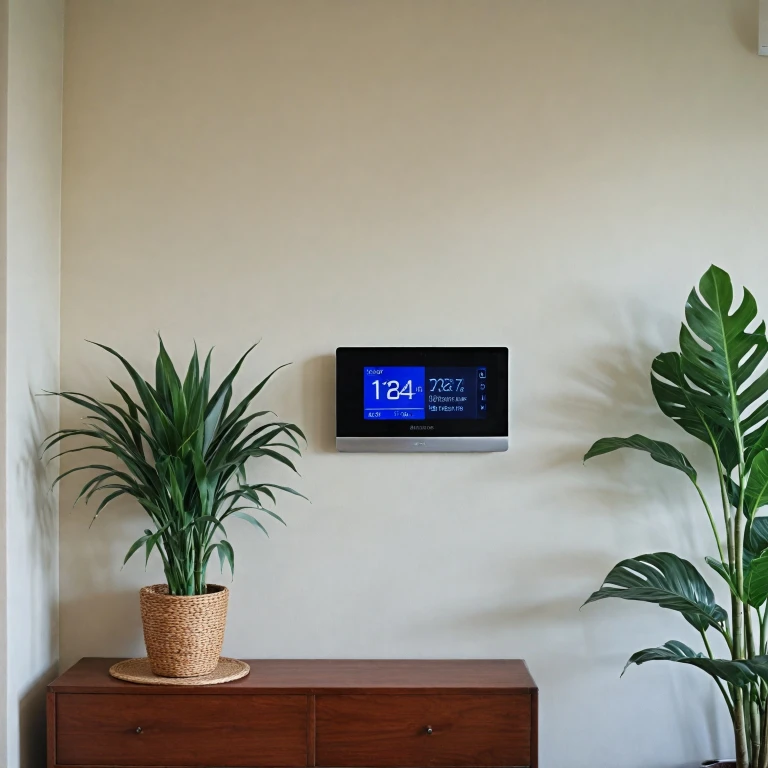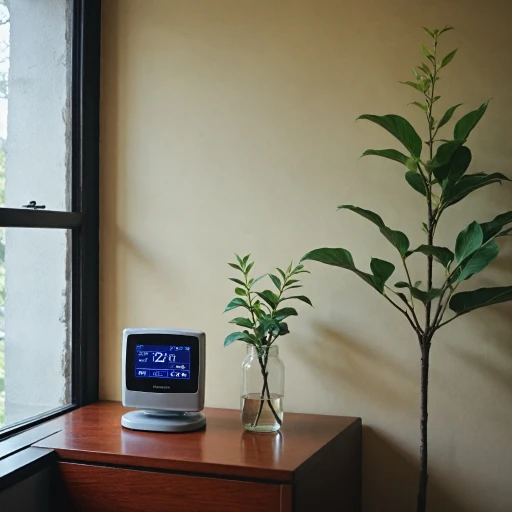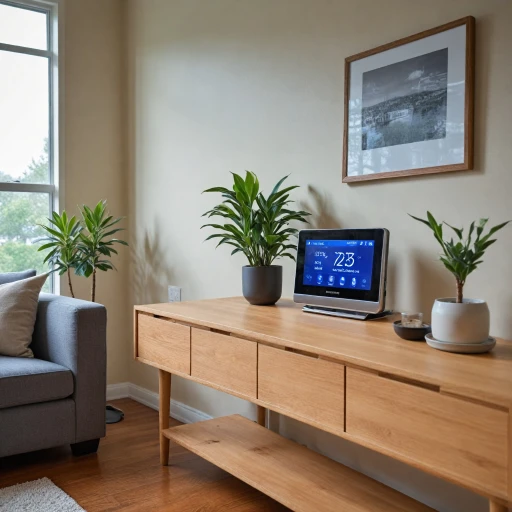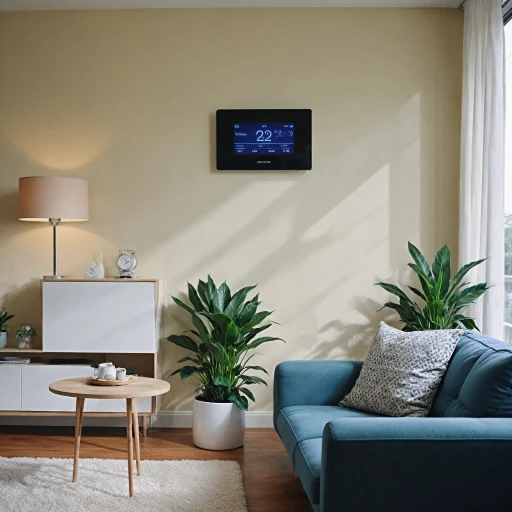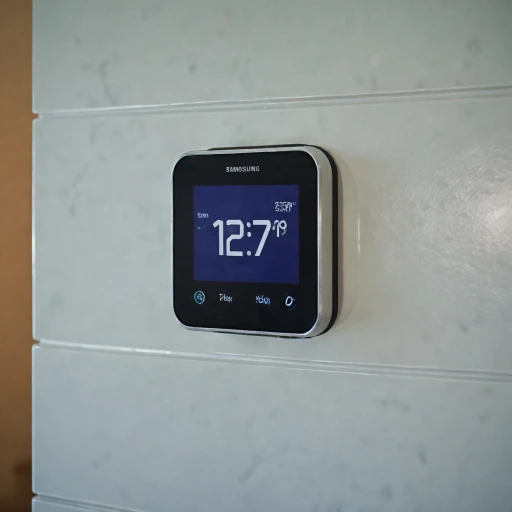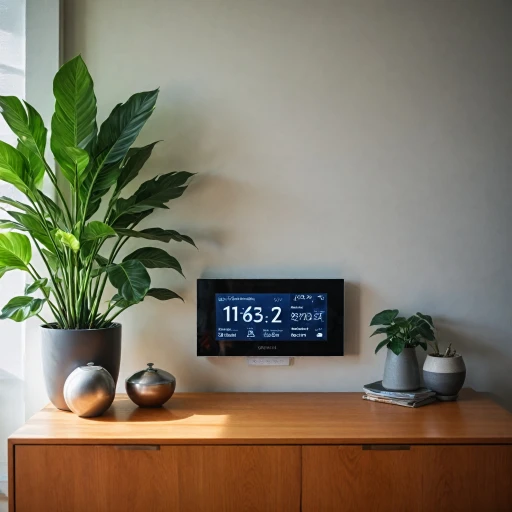What Makes the Aube Thermostat Stand Out?
Key Features that Define the Aube Thermostat
The Aube Thermostat is renowned for its sophisticated design and functionality, making it a popular choice for users seeking advanced temperature control solutions. One standout aspect is its ability to seamlessly integrate with various electric heating systems, providing users with exceptional efficiency and comfort.- Programmability: One of the primary appeals of the Aube thermostat is its flexible programmability. It offers a range of options, from the day programmable mode, allowing daily customization, to more extended schedules accommodating month-long preferences.
- Multi-function Capability: This thermostat comes equipped with features that enhance its versatility, such as floor sensing which optimizes floor heating systems and adapts to different electric heating requirements.
- Voltage and Amperage Options: With support for low voltage and various vac amps ratings, users can ensure compatibility with their specific setup, whether they have a single pole or dual pole configuration.
- Intuitive Interface: The Aube Honeywell provides an easy-to-use and adjustable interface that allows users to manage temperature control simply and effectively, maximizing comfort while minimizing energy consumption.
Benefits of Using an Aube Thermostat
Advantages of Incorporating an Aube Thermostat
The Aube thermostat is increasingly becoming a popular choice among homeowners for several compelling reasons. Here's a breakdown of the significant benefits that come with using an Aube programmable thermostat:- Energy Efficiency: The Aube thermostat models, including the Aube programmable ones, are engineered to optimize heating schedules. This can lead to substantial energy savings throughout the month as these thermostats allow precise temperature control based on your specific needs.
- Customizable Temperature Control: These thermostats provide users with the ability to fine-tune temperatures precisely. Whether you're using a model with floor sensing capabilities or a traditional mode, the Aube brand ensures that temperature control is at your fingertips.
- Easy Integration and User-Friendly Interface: One of the standout features of Aube thermostats is their seamless integration into existing heating systems. The installation process is straightforward, minimizing hassle for the customer. Their user-friendly interface makes it easy to set up day programmable schedules, making them perfect for users who want a simple yet efficient thermostat.
- Versatile Product Range: Aube offers a variety of models catering to different needs, whether for low voltage or electric heating systems. This includes single pole and double pole options, ensuring compatibility with most home heating infrastructures.
- Market Competitiveness: Compared to other market leaders like Honeywell thermostats, Aube's products are competitively priced while maintaining high-quality standards. They offer excellent value, making it a wise buy for anyone looking to upgrade their home’s heating control system.
- Durability and Reliability: Built with robust materials, these thermostats are designed to withstand regular use without compromising performance. This durability means fewer replacements and reduced costs over time.
Installation Tips for the Aube Thermostat
Steps to Install Your Aube Thermostat Effectively
Installing an Aube thermostat can be a straightforward process if you follow some essential steps. Whether you are dealing with a programmable thermostat or a more advanced model, understanding the installation process is crucial for optimal performance.
Gathering the Necessary Tools and Items
Before you begin, ensure you have all the necessary tools and items. You will need a screwdriver, wire stripper, and the thermostat unit itself. Make sure to check if your model is a low voltage or a high voltage programmable thermostat, as this will affect the installation process. Having a comprehensive guide handy can also be beneficial.
Preparing for Installation
Start by turning off the power to your heating system to avoid any electrical mishaps. Remove the old thermostat carefully, noting the wiring configuration. Aube thermostats, including models like the Honeywell Aube, often come with detailed wiring diagrams. These diagrams will guide you in connecting the wires correctly.
Mounting the Thermostat
Once the wiring is sorted, mount the thermostat on the wall. Ensure it is level and secure. For models with floor sensing capabilities, like some electric heating thermostats, you might need to install additional sensors. Check the thermostat rating and voltage requirements to ensure compatibility with your system.
Configuring the Settings
After installation, configure your thermostat settings. Set the temperature control to your desired levels and program the day and night modes according to your schedule. Many Aube programmable thermostats offer day programmable features, allowing you to set different temperatures for each day of the week.
Final Checks and Testing
Finally, restore power and test your thermostat. Ensure it switches between heating modes correctly and that the temperature readings are accurate. If you encounter any issues, consult the troubleshooting section for common problems with Aube thermostats.
Troubleshooting Common Issues with Aube Thermostats
Resolving Common Issues with Aube Thermostats
Like any technology product, Aube thermostats may occasionally present challenges, but most issues can be resolved with simple troubleshooting steps. Having a comprehensive understanding of your thermostat can help, as can gaining familiarity with its benefits and installation process.- Temperature Fluctuations: If your Aube thermostat isn't maintaining the set temperature, check the sensor's positioning. Ensure that it's not influenced by direct sunlight or drafts, which can cause misleading readings. Verifying the thermostat's settings, such as "day programmable" and "heating mode," can also help stabilize temperature control.
- Device Not Powering On: This can often be linked to voltage issues. Make sure the thermostat rating is compatible with your home's electrical setup. If the product is "low voltage," but your home supports "vac amps," you may need professional assistance for configuration.
- Error Messages: Error codes can appear on the display when there are configuration mismatches or hardware malfunctions. Firstly, consult the manual to understand these codes. If the issue is related to the "floor sensing" feature in "electric heating," it might require a recalibration of the sensor.
- Programmable Features Not Working: It's crucial to diligently set the "day programmable" options based on your daily schedule. Check if the timers are set correctly to avoid disruptions in "aube programmable" settings.
- Delivery Delays on Thermostat Settings: Sometimes, there might be delays in the thermostat responding to changes in settings. Low power supply or outdated firmware could be factors. Regular firmware updates from Aube Technologies ensure optimal performance.
- Compatibility Issues with Other Systems: When integrating with other home system brands like Honeywell, ensure all devices are updated and properly synced. Sometimes, replacing older parts in the HVAC system can improve compatibility.
Comparing Aube Thermostats to Other Brands
Contrasting Key Features
When evaluating different smart thermostats, it's crucial to focus on the unique features each brand offers. The Aube thermostat, particularly known for its precise temperature control and user-friendly interface, stands out in several aspects. Its programmable thermostat capabilities allow users to tailor heating schedules, contributing to significant energy savings. In comparison, Honeywell thermostats have an edge with their advanced remote-control technologies, but Aube provides a more intuitive programmable experience.Compatibility and Integration
Compatibility is another important consideration when selecting a thermostat. Aube technologies excel in offering solutions that seamlessly integrate with electric heating systems, making them a preferred choice for homes with such setups. They are engineered to work well with floor sensing and low voltage systems, ensuring efficient operation. Meanwhile, Honeywell thermostats often boast broader compatibility across different heating systems but may not offer the same specialization in electric heating as Aube.Installation and Setup
Installation ease is a factor that many buyers appreciate. Aube programmable thermostats are known for relatively simple setup processes, often featuring straightforward, single-pole or double-pole installation options. This makes the installation process less daunting for users who prefer a DIY approach. On the contrary, Honeywell may offer products that require professional installation, especially for more complex, high-end thermostats.Durability and Reliability
In terms of reliability, both Aube and Honeywell are well-regarded, but Aube thermostats get a nod for their durable construction, which can withstand high-voltage conditions, adding longevity to the product. The thermostat ratings often reflect their ability to maintain consistent performance over months and years.Price and Value for Money
Considering the price point, Aube products usually offer a budget-friendly option without compromising on essential features. Their items provide substantial value for those seeking efficient temperature control at an affordable price. Honeywell may position itself in a slightly higher price category, justified by more extensive features and broader integration capabilities. Evaluating these aspects helps inform a wise decision when deciding whether to add an Aube thermostat to your cart – ensuring it meets your heating and programmable needs effectively.Future Trends in Smart Thermostat Technology
The Evolution of Smart Thermostats and Emerging Innovations
In the ever-evolving landscape of smart home technology, advancements in smart thermostats are consistently reshaping our approach to home climate control. The Aube thermostat, as explored earlier in the guide, represents a significant step in this evolution with its versatile features and ease of use. As we look towards the future, several trends are poised to further enhance and revolutionize smart thermostat technologies:- Increased Integration with Smart Home Systems: Future smart thermostats, like the Aube programmable options, are expected to seamlessly integrate with a broader range of smart home devices, creating a more cohesive and automated living environment. This will allow homeowners to control multiple aspects of their home, such as lighting and security, through a single interface.
- Enhanced Machine Learning Capabilities: With advancements in AI and machine learning, thermostats will likely offer more refined temperature control by learning user preferences and adjusting settings automatically. This "learning thermostat" approach, already seen in some products, minimizes manual adjustments and optimizes energy efficiency.
- Advanced Sensors: Incorporating advanced sensors into thermostats can enhance temperature regulation by providing more precise floor sensing, particularly for electric heating systems. By utilizing data such as occupancy and sunlight exposure, future thermostats will offer even more precise environmental control.
- Sustainability and Energy Efficiency: As sustainability becomes a paramount concern, smart thermostats will focus on reducing energy consumption. Features that support low voltage operations and efficient heating modes will be pivotal. Coupled with increasing consumer awareness, this technological focus will contribute to environmental conservation.
- User-friendly and Adaptable Interfaces: Future thermostats will likely offer even more intuitive interfaces and the ability to easily switch between manual and automatic modes, such as the versatile day programmable options seen in the Aube product line. This ensures accessibility for all users, regardless of technological expertise.
- Smart Grid Integration: As power grids become smarter, thermostats will interact with grid signals to optimize energy use and costs. This includes demand response features, where users can reduce or shift electricity usage during peak periods.
